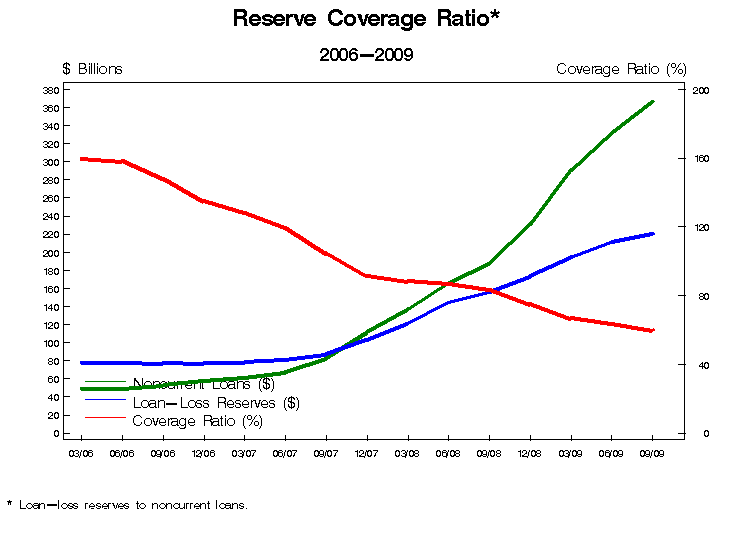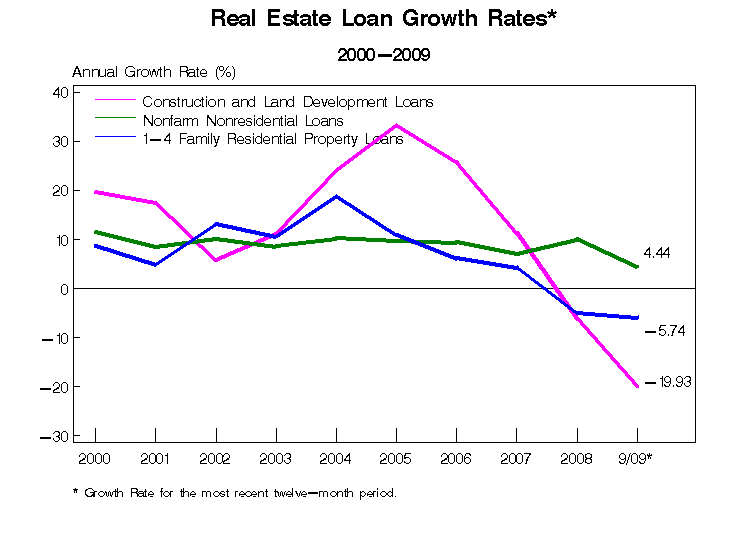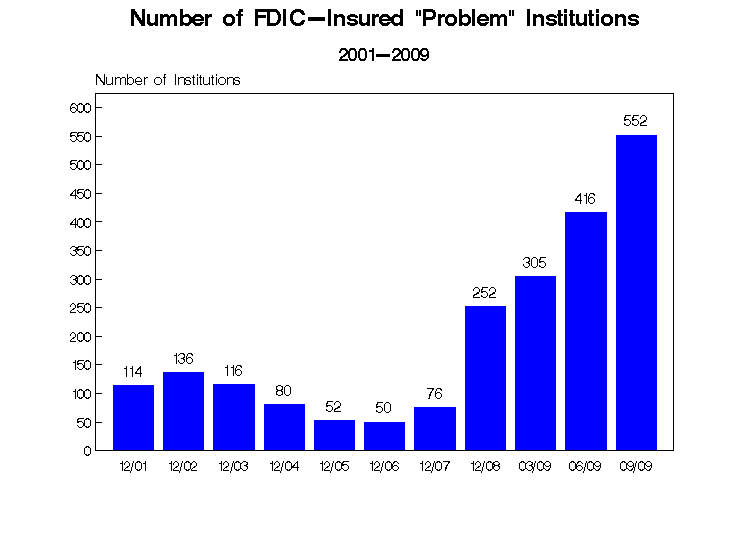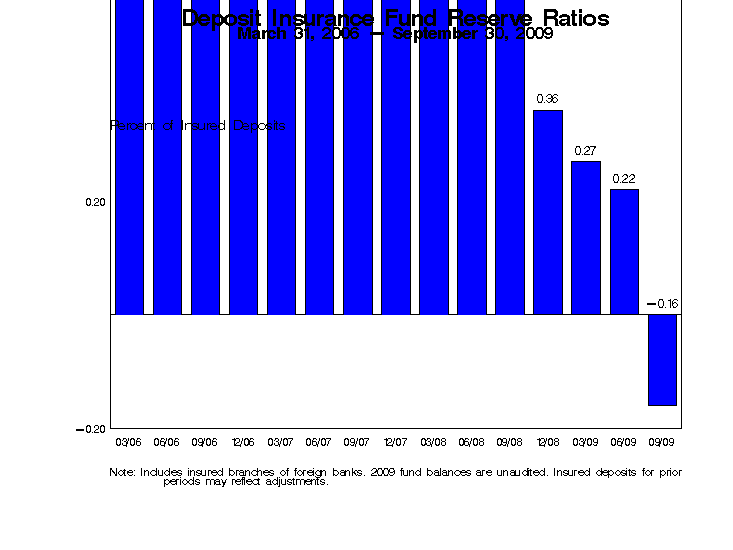FDIC 2009 Third Quarter Banking Profile Depicts Troubled Banking Industry
The FDIC released its Quarterly Banking Profile today which shows continued deterioration in the financial performance of the banking industry during the third quarter of 2009.
The Quarterly Banking Profile depicts a banking industry that continues to struggle as shown by deteriorating loan quality, increased charge-offs, an increase of 33% in the number of banks on the Problem Bank List, a negative FDIC Insurance Fund balance, the highest level of noncurrent loans on record and the largest decline in total loan balances on record. In the aggregate, the banking industry reported a net income of $2.8 billion in the third quarter but 26% of FDIC insured institutions reported a net loss.
Accordingly to FDIC Chairman Sheila Bair:
“Today’s report shows that, while bank and thrift earnings have improved, the effects of the recession continue to be reflected in their financial performance. There is no question that credit availability is an important issue for the economic recovery. We need to see banks making more loans to their business customers. This is especially true for small businesses that rely on FDIC-insured institutions to provide over 60 percent of the credit they use.”
The Chairman’s words to encourage more bank lending seem more political than practical and many banks are not inclined to lend with defaults at all time highs and loan demand weak. In addition, the Quarterly Banking Profile highlights shown below indicate that it may be some time before banks are financially capable of expanding lending
Asset Quality Deterioration Continues
Both the quarterly net charge-off rate and the percentage of loans and leases that were noncurrent (90 days or more past due or in nonaccrual status) rose to the highest levels in the 26 years that insured institutions have reported these data. Insured institutions charged off $50.8 billion in uncollectible loans during the quarter, up from $28.1 billion a year earlier, and noncurrent loans and leases increased by $34.7 billion during the third quarter. At the end of September, noncurrent loans and leases totaled $366.6 billion, or 4.94 percent of the industry’s total loans and leases.

Lending Declines By $210 Billion
Federal Deposit Insurance Corporation (FDIC) reported aggregate net income of $2.8 billion in the third quarter of 2009, but loan balances declined by the largest percentage since quarterly reporting began in 1984.
Total loans and leases declined by $210.4 billion (2.8 percent) during the quarter. Loans to commercial and industrial borrowers declined by $89.1 billion (6.5 percent), residential mortgage loan balances fell by $83.7 billion (4.2 percent), and real estate construction and development loans declined by $43.6 billion (8.1 percent). Total assets of insured institutions declined by $54 billion. Banks’ balances with Federal Reserve banks increased by $142.4 billion (36.7 percent) during the quarter, and investments in U.S. Treasury securities rose by $28.6 billion (49.3 percent), as institutions increased their lower-risk assets.

Net Interest Margins Improve Slightly
Net interest margins improved to a four-year high. The average margin (the difference between the average yield on interest-earning assets and the average interest expense of funding those assets) rose to 3.51 percent from 3.48 percent in the second quarter and 3.37 percent in the third quarter of 2008.
Problem Bank List Increases By 33% To 552 Institutions
The number of institutions on the FDIC’s “Problem List” rose to its highest level in 16 years. At the end of September, there were 552 insured institutions on the “Problem List,” up from 416 on June 30. This is the largest number of “problem” institutions since December 31, 1993, when there were 575 institutions on the list. Total assets of “problem” institutions increased during the quarter from $299.8 billion to $345.9 billion, the highest level since the end of 1993, when they totaled $346.2 billion. Fifty institutions failed during the third quarter, bringing the total number of failures in the first nine months of 2009 to 95.

FDIC Deposit Insurance Fund Has $8 Billion Negative Balance
As projected in September, the FDIC’s Deposit Insurance Fund (DIF) balance – or the net worth of the fund – fell below zero for the first time since the third quarter of 1992. The fund balance of negative $8.2 billion as of September already reflects a $38.9 billion contingent loss reserve that has been set aside to cover estimated losses over the next year. Just as banks reserve for loan losses, the FDIC has to set aside reserves for anticipated closings over the next year. Combining the fund balance with this contingent loss reserve shows total DIF reserves with a positive balance of $30.7 billion.
To further bolster the DIF’s cash position, the FDIC Board approved a measure on November 12th to require insured institutions to prepay three years worth of deposit insurance premiums – about $45 billion – at the end of 2009.

Speak Your Mind
You must be logged in to post a comment.